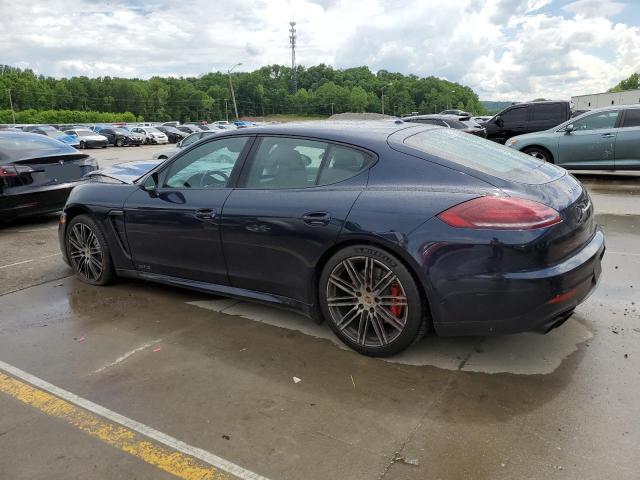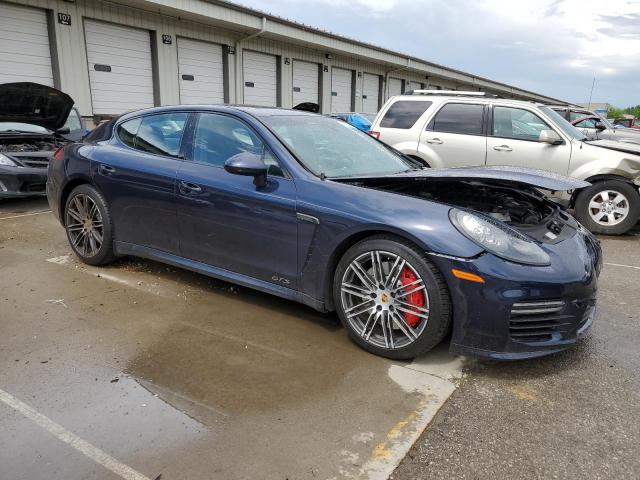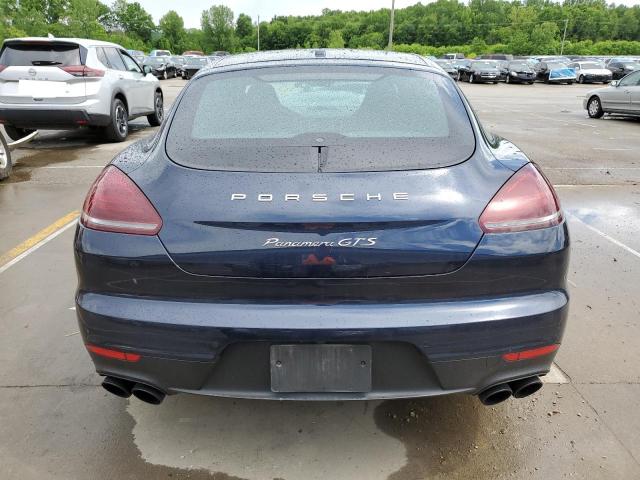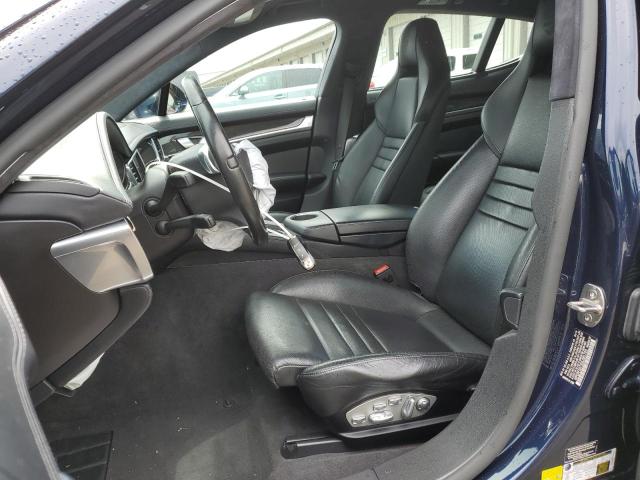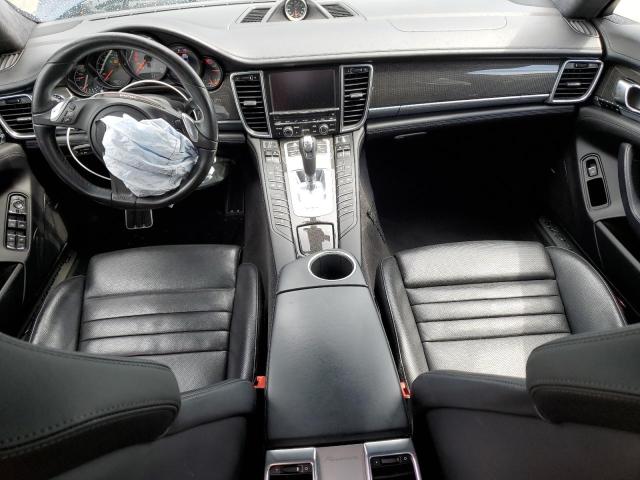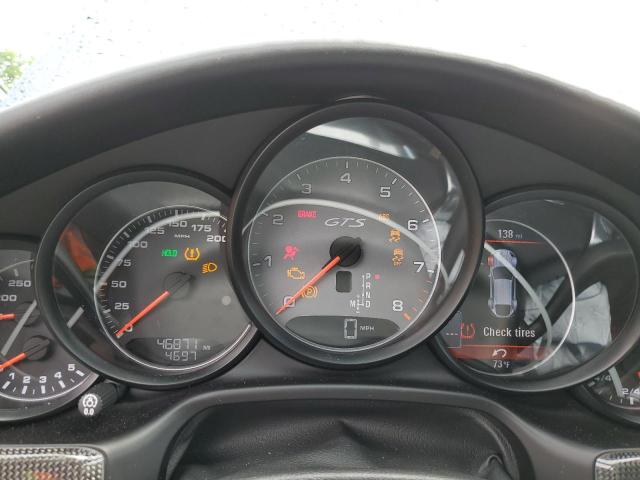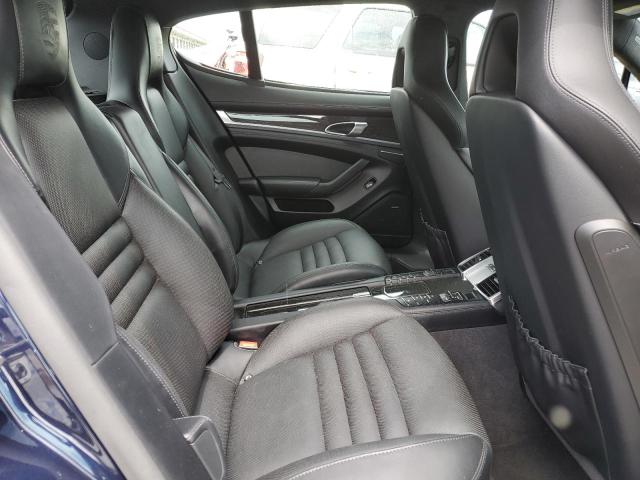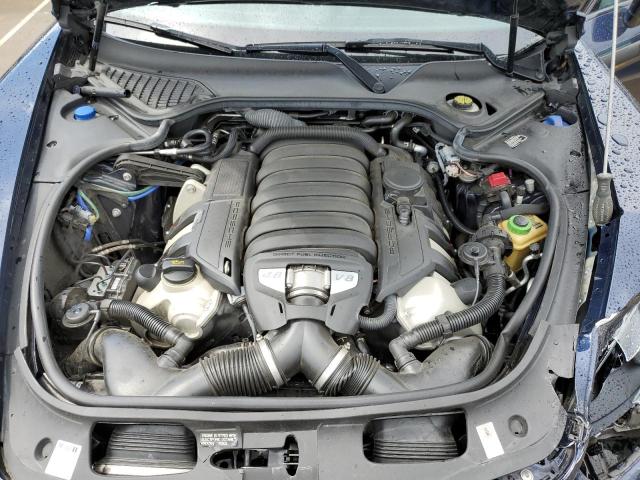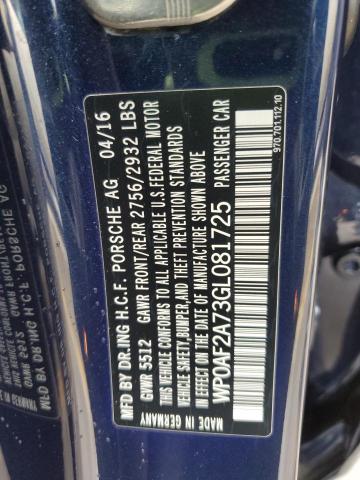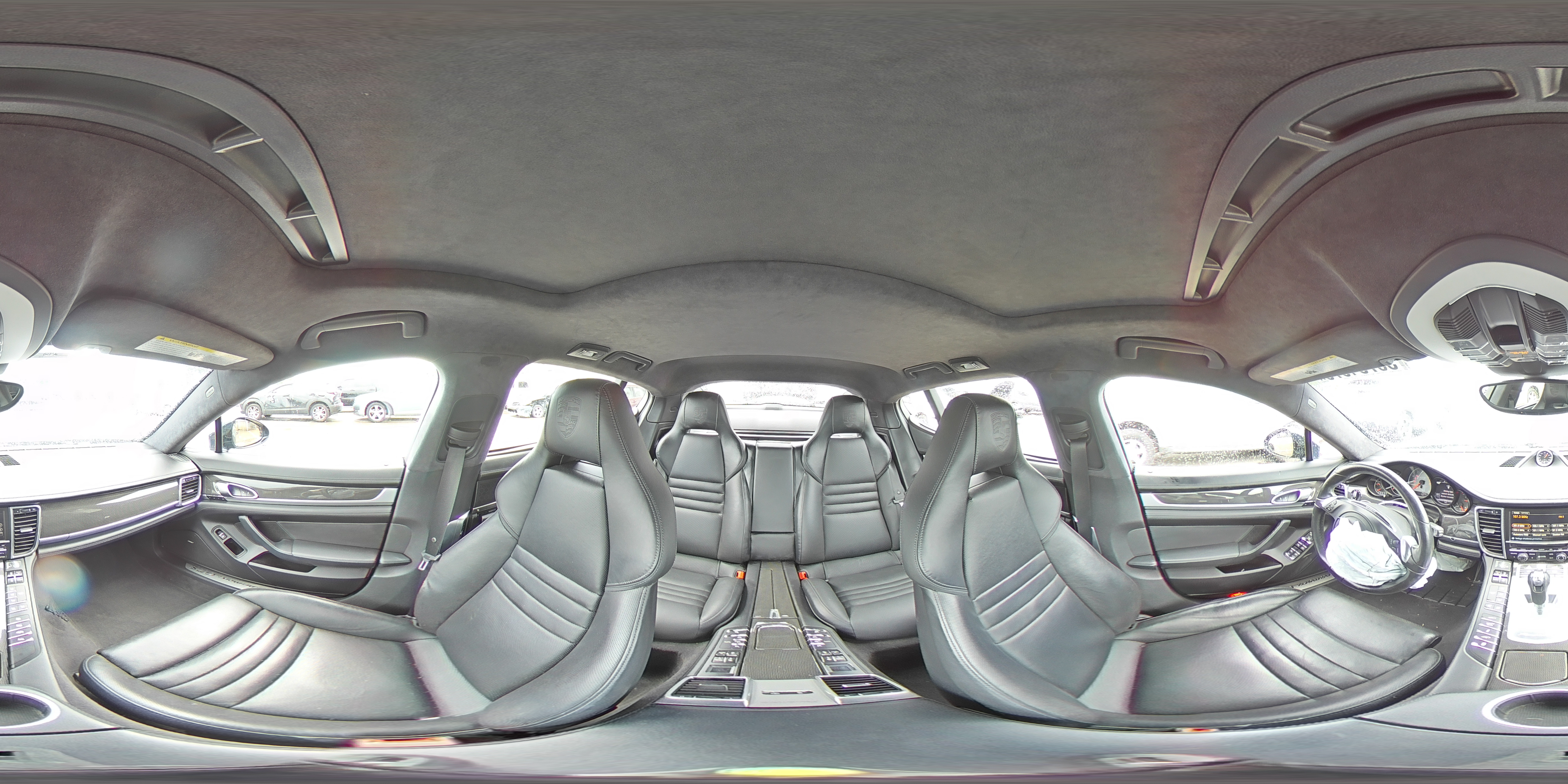2016 PORSCHE PANAMERA | WP0AF2A73GL081725
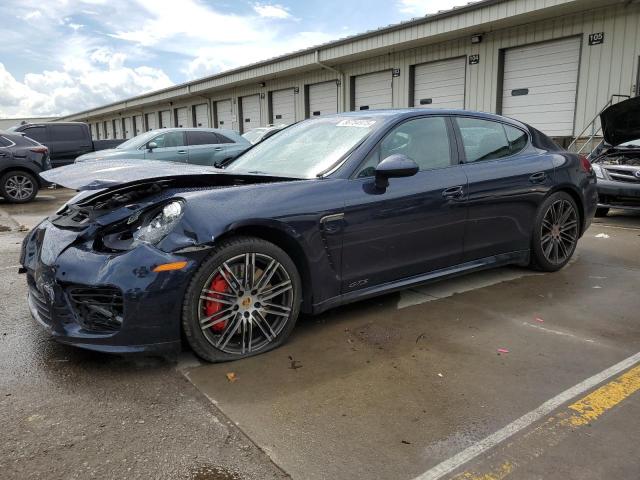 ❯
❯
Specifications
8
~$180,000
Engine: 4.8L twin-turbocharged V8
Torque: 750 Nm (with overboost)
0–100 km/h: ~3.8 s
The first-generation Panamera redefined what a large luxury sedan could be. At its peak, the Turbo S version delivered 570 horsepower from a twin-turbocharged 4.8L V8, enabling a stunning 0–100 km/h sprint in just 3.8 seconds—numbers that rivaled many two-door supercars of the time. Torque climbed to 750 Nm with overboost activated, and the PDK dual-clutch transmission ensured immediate and aggressive shifts under load.
Despite its size and weight, the Panamera handled with remarkable agility thanks to Porsche’s adaptive air suspension, dynamic chassis control, and available torque vectoring. The low center of gravity, rear-biased all-wheel-drive system, and precise steering allowed the Panamera to attack corners like a much smaller car. Especially in the GTS and Turbo models, the chassis tuning struck a fine balance between long-distance comfort and racetrack precision.
What made the Panamera stand out wasn’t just its performance metrics, but its concept—a genuine four-door Porsche that retained the driver-focused ethos of the 911 while offering full-size luxury sedan comfort. It provided a unique proposition: high-performance grand touring with space for four adults, exceptional cabin materials, and Porsche's uncompromising engineering. It brought supercar thrills into an executive limousine form, especially in its Turbo S and GTS guises.
Body Styles
The first-generation Porsche Panamera was introduced as a 5-door liftback luxury sedan with fastback proportions. Its long hood, short front overhang, and sloping rear roofline echoed Porsche's 911 DNA while providing a fully usable rear hatch and generous trunk space. Though controversial at launch for its bulbous silhouette, the Panamera prioritized rear headroom and cabin space, leading to a more practical form compared to traditional sedans. It maintained a wide stance and muscular fenders, giving it a commanding road presence despite being nearly 5 meters long.
Model Name Meaning (Manufacturer)
“Panamera” is inspired by the historic Carrera Panamericana endurance race held in Mexico during the 1950s. The name was chosen to evoke long-distance performance, high speed, and motorsport pedigree—linking it thematically to Porsche's other race-derived names like "Carrera" and "Targa".
Model Name Meaning (Languages)
The word "Panamera" does not have a literal meaning in most languages, but phonetically conveys prestige and fluidity. Its suffix “-mera” creates a musical tone that aligns with exotic and luxurious branding. For enthusiasts familiar with "Carrera Panamericana," it carries a romanticized sense of endurance racing heritage.
Body & Interior Colors and Rims
The Panamera’s exterior color palette balanced classic Porsche shades with executive elegance. Common colors included Jet Black Metallic, Carrara White, Rhodium Silver, and Sapphire Blue, with special order paints like Cognac Metallic, Amethyst Metallic, or Carbon Grey for Exclusive builds. Sportier trims like the GTS and Turbo S often featured dark exterior accents and available contrast elements such as painted side skirts or blacked-out window trim.
Inside, the Panamera was offered with an extensive selection of full leather interiors in Black, Luxor Beige, Agate Grey, Garnet Red, or Espresso, with optional bicolor designs. The GTS introduced Alcantara inserts and contrast stitching, while carbon fiber, brushed aluminum, or piano black inlays enhanced sport-luxury appeal. Individualized custom interiors through Porsche Exclusive allowed near-infinite combinations including wood veneers, contrast piping, and Porsche crests embossed into headrests.
Wheel designs ranged from 18-inch standard alloys on base models to aggressive 20-inch Turbo II wheels or center-lock RS Spyder designs on high-spec variants. Finishes included silver, polished, matte black, and even color-matched body tones. The wheel arches and offsets gave the Panamera an imposing, performance-oriented stance.
Top Expensive Options
- Porsche Ceramic Composite Brakes (PCCB): $9,210
- Burmester 3D High-End Surround Sound: $5,690
- Adaptive Sport Seats Plus with Ventilation and Memory: $4,520
- SportDesign Exterior Package with Gloss Black Accents: $4,250
- Sport Chrono Package Plus (with Launch Control): $2,500
- Porsche Dynamic Chassis Control (PDCC): $4,410
- LED Matrix Headlights with Porsche Dynamic Light System: $3,100
- Rear Seat Entertainment System: $4,040
- 20" RS Spyder Design Wheels in Satin Platinum: $3,830
- Porsche Exclusive Interior Package (Extended Leather with Carbon): $5,820
vs Competitors
The Panamera carved out a niche between the stately Mercedes-Benz S-Class and the dynamically sharper BMW 7 Series or Audi A8. Unlike its rivals, it prioritized the driver, offering a transaxle layout, rear-wheel drive (or optional AWD), and precise steering more akin to a 911 than a limousine. The Audi S8 and BMW 750i offered similar V8 performance, but lacked the same chassis agility and feedback. The Panamera also undercut true exotic four-doors like the Aston Martin Rapide in price, while matching or exceeding their performance. In its GTS and Turbo S trims, the Panamera provided a purist’s alternative to traditional executive sedans—a sportscar dressed as a luxury GT.
Fun Fact
Porsche launched the Panamera by dramatically driving it into the 94th floor of the Shanghai World Financial Center via the building’s freight elevator—symbolizing both the model’s global ambition and executive status. It was also the first Porsche with an automatic start/stop system and the first to use Porsche’s new PDK dual-clutch in a luxury 4-door application.
Lot Details
-
Sale Date12/Jun/2025
-
Lot Number56754975
-
Location
-
Odometer46,871 miles (75,431 km)
-
Primary Damage:FRONT END
-
Fuel
-
Engine Type4.8L 8
-
Transmission
-
Drive Type
-
Color
Final Bid Porsche Panamera (2016)
$10,100
$14,860
$18,400
Specifications
8
~$180,000
Torque:
0–100 km/h:
The first-generation Panamera redefined what a large luxury sedan could be. At its peak, the Turbo S version delivered 570 horsepower from a twin-turbocharged 4.8L V8, enabling a stunning 0–100 km/h sprint in just 3.8 seconds—numbers that rivaled many two-door supercars of the time. Torque climbed to 750 Nm with overboost activated, and the PDK dual-clutch transmission ensured immediate and aggressive shifts under load.
Despite its size and weight, the Panamera handled with remarkable agility thanks to Porsche’s adaptive air suspension, dynamic chassis control, and available torque vectoring. The low center of gravity, rear-biased all-wheel-drive system, and precise steering allowed the Panamera to attack corners like a much smaller car. Especially in the GTS and Turbo models, the chassis tuning struck a fine balance between long-distance comfort and racetrack precision.
What made the Panamera stand out wasn’t just its performance metrics, but its concept—a genuine four-door Porsche that retained the driver-focused ethos of the 911 while offering full-size luxury sedan comfort. It provided a unique proposition: high-performance grand touring with space for four adults, exceptional cabin materials, and Porsche's uncompromising engineering. It brought supercar thrills into an executive limousine form, especially in its Turbo S and GTS guises.
Body Styles
The first-generation Porsche Panamera was introduced as a 5-door liftback luxury sedan with fastback proportions. Its long hood, short front overhang, and sloping rear roofline echoed Porsche's 911 DNA while providing a fully usable rear hatch and generous trunk space. Though controversial at launch for its bulbous silhouette, the Panamera prioritized rear headroom and cabin space, leading to a more practical form compared to traditional sedans. It maintained a wide stance and muscular fenders, giving it a commanding road presence despite being nearly 5 meters long.
Model Name Meaning (Manufacturer)
“Panamera” is inspired by the historic Carrera Panamericana endurance race held in Mexico during the 1950s. The name was chosen to evoke long-distance performance, high speed, and motorsport pedigree—linking it thematically to Porsche's other race-derived names like "Carrera" and "Targa".
Model Name Meaning (Languages)
The word "Panamera" does not have a literal meaning in most languages, but phonetically conveys prestige and fluidity. Its suffix “-mera” creates a musical tone that aligns with exotic and luxurious branding. For enthusiasts familiar with "Carrera Panamericana," it carries a romanticized sense of endurance racing heritage.
Body & Interior Colors and Rims
The Panamera’s exterior color palette balanced classic Porsche shades with executive elegance. Common colors included Jet Black Metallic, Carrara White, Rhodium Silver, and Sapphire Blue, with special order paints like Cognac Metallic, Amethyst Metallic, or Carbon Grey for Exclusive builds. Sportier trims like the GTS and Turbo S often featured dark exterior accents and available contrast elements such as painted side skirts or blacked-out window trim.
Inside, the Panamera was offered with an extensive selection of full leather interiors in Black, Luxor Beige, Agate Grey, Garnet Red, or Espresso, with optional bicolor designs. The GTS introduced Alcantara inserts and contrast stitching, while carbon fiber, brushed aluminum, or piano black inlays enhanced sport-luxury appeal. Individualized custom interiors through Porsche Exclusive allowed near-infinite combinations including wood veneers, contrast piping, and Porsche crests embossed into headrests.
Wheel designs ranged from 18-inch standard alloys on base models to aggressive 20-inch Turbo II wheels or center-lock RS Spyder designs on high-spec variants. Finishes included silver, polished, matte black, and even color-matched body tones. The wheel arches and offsets gave the Panamera an imposing, performance-oriented stance.
Top Expensive Options
- Porsche Ceramic Composite Brakes (PCCB): $9,210
- Burmester 3D High-End Surround Sound: $5,690
- Adaptive Sport Seats Plus with Ventilation and Memory: $4,520
- SportDesign Exterior Package with Gloss Black Accents: $4,250
- Sport Chrono Package Plus (with Launch Control): $2,500
- Porsche Dynamic Chassis Control (PDCC): $4,410
- LED Matrix Headlights with Porsche Dynamic Light System: $3,100
- Rear Seat Entertainment System: $4,040
- 20" RS Spyder Design Wheels in Satin Platinum: $3,830
- Porsche Exclusive Interior Package (Extended Leather with Carbon): $5,820
vs Competitors
The Panamera carved out a niche between the stately Mercedes-Benz S-Class and the dynamically sharper BMW 7 Series or Audi A8. Unlike its rivals, it prioritized the driver, offering a transaxle layout, rear-wheel drive (or optional AWD), and precise steering more akin to a 911 than a limousine. The Audi S8 and BMW 750i offered similar V8 performance, but lacked the same chassis agility and feedback. The Panamera also undercut true exotic four-doors like the Aston Martin Rapide in price, while matching or exceeding their performance. In its GTS and Turbo S trims, the Panamera provided a purist’s alternative to traditional executive sedans—a sportscar dressed as a luxury GT.
Fun Fact
Porsche launched the Panamera by dramatically driving it into the 94th floor of the Shanghai World Financial Center via the building’s freight elevator—symbolizing both the model’s global ambition and executive status. It was also the first Porsche with an automatic start/stop system and the first to use Porsche’s new PDK dual-clutch in a luxury 4-door application.

